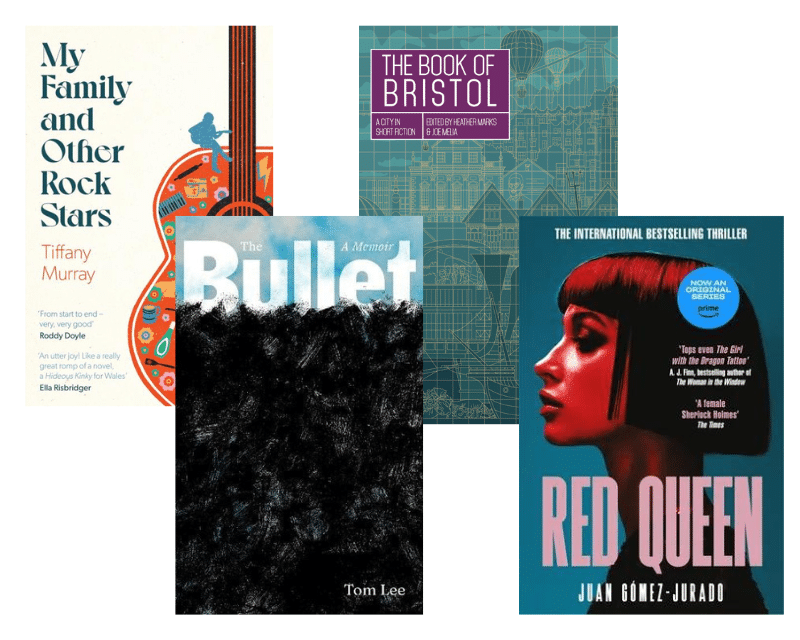- Collected
- Article
The Madness Of Art
Henry James' notebooks

- 22 November, 2021
- Miranda Miller
I have been reading the notebooks Henry James kept from 1878, when he was thirty-five, until five years before his death. These are, I think, a rich source for anyone trying to write fiction. People often ask writers where their ideas come from, and James answers this question. He writes about the ‘germ’ of a story, how you know when you have found it or been given it. I love the metaphors he uses about writing: of memories as the insects that crawl around when you lift a stone, and of himself as a ship voyaging with his cargo of impressions stashed away on board. At the time, James used his notebooks as a writer’s diary, so they take us inside his hopes and fears and reveal a man who was often lonely and depressed. Later, he used them to refresh his memory when he was writing the preface to the collected edition of his novels.
Before he moved to Lamb House in Rye in his fifties James lived in London where his routine was to rush around in the morning and evening visiting his friends, and to work in the afternoon. His sociability directly fed his work; many of his stories and novels developed out of an anecdote someone told him. He had a lot of friends and his attitude to them was often predatory: ‘I shall certainly put him into a novel.’ He collected names which he found curious or interesting and gave them to his characters. Like Dickens, James wrote most of his novels in monthly instalments for magazines. This imposed a strict discipline which he often found very difficult, and he constantly chides himself for writing at too much length or too slowly. He refers several times to ‘One of those terrible attacks in my head,’ which may have been migraine or depression. He regards writing fiction as ‘the refuge, the asylum. I must always have one on the stocks.’
James was immensely interested in women and sympathetic to them, yet to some extent went along with the conventions of his time; again and again in his fiction a married woman who ‘takes a lover’ is condemned and even the woman’s poor daughter is disapproved of by society and considered unlikely to marry ‘well.’ His most touching women characters – Isabel Archer in The Portrait of a Lady, Daisy Miller in the eponymous story and Milly Theale in Wings of the Dove – were probably based on his beloved cousin, Minny Temple, who died of tuberculosis when she was twenty-four.
A recurring theme in these notebooks is James telling himself to ‘let himself go.’ I take this to refer to both his repressed homosexuality and his resentment that whereas Maupassant and Zola could write freely about sex his English and American readership demanded hypocrisy. ‘If I were writing for a French public, the whole thing would be simple.’ These conflicts are fascinating and in my opinion his work dates least when he forgets about snobbery and prudish readers and writes directly, as he often does, about love, passion, fear and ambition.
The Turn of the Screw, which is the most terrifying ghost story I’ve ever read, came out of an anecdote told him by the Archbishop of Canterbury. This happened in January 1895, when James was deeply depressed about the failure of his play, Guy Domville. In his notebook James wrote: ‘the story of the young children […] left to the care of servants in an old country house through the death, presumably, of parents. The servants, wicked and depraved, corrupt and deprave the children […] The servants die (the story vague about the way of it) and their apparitions, figures return to haunt the house and children, to whom they seem to beckon […] It is all obscure and imperfect, the picture, the story, but there is a suggestion of strangely gruesome effect in it. The story to be told […] by an outside spectator, observer.’
Some critics have claimed that the haunting in the story is a figment of the neurotic governess’s imagination, but it is clear from this entry in the notebook that the Archbishop believed the ghosts were real. In his later preface to The Turn of the Screw James gives this useful advice on how to create a sense of evil : ‘Only make the reader’s general vision of evil intense enough…and his own experience, his own imagination, his own sympathy (with the children) and horror (of their false friends) will supply him quite sufficiently with all the particulars.’
Reading The Portrait of a Lady, I’ve always hoped that Isabel didn’t return to her loveless marriage with Gilbert Osmond. It’s clear from his notebooks that James intended to leave Isabel’s story unfinished: ‘The whole of anything is never told.’ He fought against the Victorian convention that novels should end neatly, with the good characters marrying and the bad being punished. ‘Really, universally, relations stop nowhere and the exquisite problem of the artist is eternally but to draw, by a geometry of his own, the circle within which they shall happily appear to do so.’ He advocated ‘the denouement,’ better than the twist, I think, because (in the sense he uses the word) it comes out of characters, not plot. He fascinatingly analyses the motives and psychological complexities of his characters and tries to anticipate how readers will see them.
In The Tragic Muse James writes clearly about how he saw the conflict between artists and the stodgily unimaginative British Establishment. He loved the theatre and many of his friends were actors. In his notebook he gossips about Henry Irving and Ellen Terry. In a conversation with the novelist Mrs Humphry Ward, whose books were far more popular than his own, she told him an anecdote about a young actress who was helped by a man who reluctantly fell in love with her. She became a celebrity – James uses this word in a very twenty-first century sense – and James refers to the theory of Madge Kendal, a famous actress of the period, that ‘the dramatic gift is a thing by itself — implying of necessity no general superiority of mind.’ These conversations inspired the ruthlessly ambitious Miriam Rooth and her shabby genteel mother, two of James’ most entertaining characters, and the novel’s subplot about Nick Dormer, who throws away a political career to become a painter.
What Maisie Knew is about a child’s complicated relationship with her divorced parents, who have both remarried and ‘cease to care for the child…as soon as they have her no longer to quarrel about.’ This, one of his most touching novels, came out of an anecdote told him at a dinner party about a real child, torn apart by divorce, who preferred her step-parents to her birth parents. In the novel the two step-parents, brought together by their bond with Maisie, start a love affair ‘with the innocent child in the midst’. James’ outline of the novel he is writing is detailed and subtle.
Because he disliked writing in the first person James used the point of view of his ‘reflector’ characters. He knew Turgenev and admired the way he ‘so perfectly cut the umbilical cord that bound the story to himself.’ In James’ notebooks, however, we do hear his own voice.
During my frequent crises as a writer, these are the pieces of advice I return to again and again. James was talking to himself, but he might have been talking to any of us: ‘Never say you know the last word about any human heart!’; ‘Dramatise it! Dramatise it!’ In a way this is ironical, as James’ own attempts at drama were famously unsuccessful. But his novels are full of memorable scenes between people. This is similar to ‘show don’t tell,’ that tired old warhorse from creative writing classes, but I think it’s more dynamic. Finally, this passage makes my spine tingle every time I read it: ‘We work in the dark – we do what we can – we give what we have. Our doubt is our passion and our passion is our task. The rest is the madness of art.’
You might also like:
Anywhere But a Room of One’s Own
I am a writer looking to be re-homed. All I need is a laptop, a table and a chair, and…
RLF Fellows’ News: May 2024
Publishing RLF Fellow Tom Lee’s new book, The Bullet, his memoir about family and mental health, has recently been published…
Her Majesty The Queen is announced as our new Royal Patron
To mark the first anniversary of Their Majesties’ Coronation, it has been announced Her Majesty The Queen will take on…


